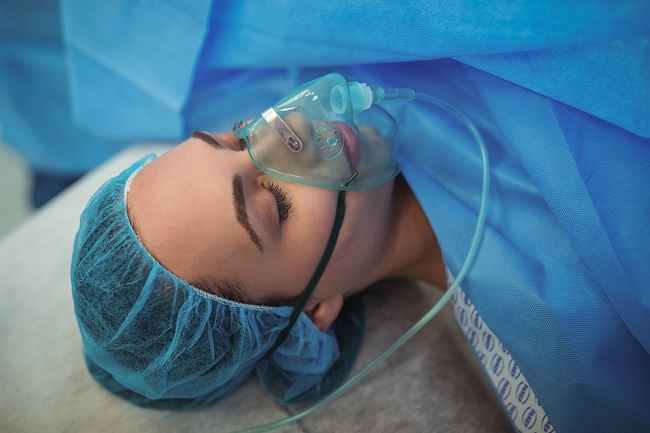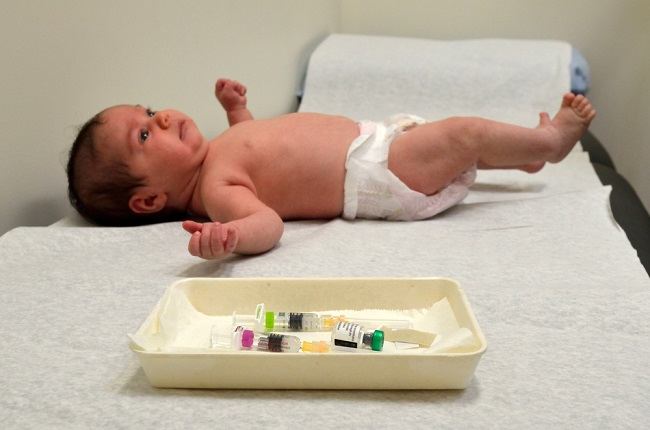Biliary atresia is a condition when the bile ducts in newborns close, causing bile to accumulate in the liver. This condition can occur since the baby is in the womb. However, symptoms more often appear 2-4 weeks after birth.
The bile duct is a duct that carries bile from the liver cells to the duodenum. Bile plays a role in the digestion of fats and fat-soluble vitamins, such as vitamins A, D, E, and K. Bile also functions to remove toxins and other waste substances from the body.

In infants with biliary atresia, bile cannot flow into the intestines because the ducts are blocked. This condition can cause damage to the liver tissue and trigger the formation of scar tissue which over time can develop into cirrhosis.
Biliary atresia is not a disease that is passed down from parents and is rare. Even so, this condition is serious and dangerous if not found and treated quickly.
Causes of Biliary Atresia
It is not known what causes biliary atresia. However, it is suspected that this condition is related to several factors, including:
- Viral or bacterial infection
- Exposure to harmful chemicals
- Immune system disorders
- Mutations or changes in certain genes
- Impaired development of the liver and bile ducts in the womb
- Use of certain medications, such as carbamazepine, during pregnancy
Symptoms of Biliary Atresia
Babies with biliary atresia will show signs of jaundice. This condition is normal in newborns and will go away in 2-3 weeks. However, in infants with biliary atresia, jaundice may last more than 3 weeks.
Baby's weight is generally normal and will increase for 1 month after birth. However, after that, the weight will go down and difficult to gain. Her jaundice will also get worse over time.
Other symptoms of biliary atresia are:
- Dark urine
- The stool is pale (gray white) and has a pungent odor
- Stomach swells due to enlargement of the liver and spleen
- Nosebleed
- Itchy rash
When to go to the doctor
Immediately consult a doctor if your baby looks yellow, especially if there are other symptoms that point to biliary atresia as described above.
If not treated immediately, infants with biliary atresia will develop cirrhosis within 6 months and liver failure within 1 year. If left untreated, the baby will need a liver transplant at the age of 2 years.
Biliary Atresia Diagnosis
To diagnose biliary atresia, the doctor will ask about the symptoms that occur in the baby. After that, the doctor will check for signs of jaundice and the color of the baby's urine and feces if any. The doctor will also feel the baby's abdomen to detect an enlarged liver (hepatomegaly) or an enlarged spleen (splenomegaly).
Biliary atresia has similar symptoms to liver disease. To confirm the diagnosis, the doctor will carry out supporting examinations, such as:
- Blood tests, to measure bilirubin levels
- Abdominal ultrasound, to see an overview of the organs in the biliary system, liver, and spleen in more detail
- Hepatobiliary iminodiacetic acid (HIDA) scan, to determine the location of the blocked bile duct, whether inside or outside the liver
- Biopsy (tissue sampling) of the liver, to look for damage to the liver and rule out the possibility that jaundice is caused by another condition, such as hepatitis.
- Diagnostic surgery with laparoscopy, ie by anesthetizing the patient and making a small incision in the patient's abdomen to view the condition of the liver and bile ducts through a camera
Biliary Atresia Treatment
The main treatment for biliary atresia is Kasai surgery. This operation is performed by cutting the blocked bile duct and replacing it with part of the baby's small intestine.
If performed before the baby is 3 months old, this surgery has an 80% success rate. However, it should be noted that Kasai surgery does not cure biliary atresia. This surgery only slows the occurrence of complications, such as liver tissue damage.
Bile ducts are located inside and outside the liver. Biliary atresia that occurs in the bile ducts in the liver cannot be treated with Kasai surgery. Handling that can be done is giving vitamins and supplements to help excrete bile from the liver.
However, these measures are usually not sufficient. The doctor may also recommend a liver transplant to replace the damaged liver with a healthy liver from a donor.
In the vast majority of cases, babies who have had Kasai surgery also still need a liver transplant, but for a longer time.
Complications of Biliary Atresia
Biliary atresia can cause a baby to be unable to digest fats from breast milk or formula. This is because the bile needed to digest fat cannot reach the intestines. In addition, babies with biliary atresia can also experience vitamin A, D, E, and K deficiencies.
This can cause stunted growth of the baby and some health problems due to vitamin deficiency, such as infection, bleeding, and visual disturbances. However, this complication can be managed by providing food and supplements that are able to meet the intake of fat and vitamins in infants.
It is important to remember that biliary atresia can lead to other, more dangerous complications, namely cirrhosis and liver failure. Therefore, early diagnosis and treatment is very important for patients with biliary atresia.
Biliary Atresia Prevention
As described above, the cause of biliary atresia is not known with certainty. Therefore, it is not yet known how to prevent this disease. Even so, pregnant women can reduce the risk of their babies developing this disease by doing the following:
- Prevent infection by maintaining body hygiene and getting immunizations
- Carry out a pregnancy checkup according to the schedule recommended by the doctor
- Living a healthy lifestyle, for example by not smoking
- Avoid exposure to harmful chemicals
- Sufficient nutritional needs during pregnancy through food and regularly taking prenatal vitamins









